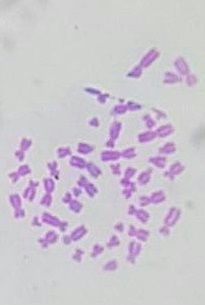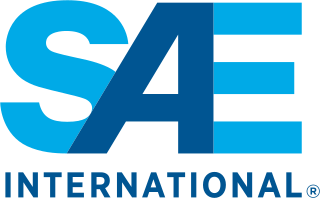
A schematic, or schematic diagram, is a designed representation of the elements of a system using abstract, graphic symbols rather than realistic pictures. A schematic usually omits all details that are not relevant to the key information the schematic is intended to convey, and may include oversimplified elements in order to make this essential meaning easier to grasp, as well as additional organization of the information.
Systems design interfaces, and data for an electronic control system to satisfy specified requirements. System design could be seen as the application of system theory to product development. There is some overlap with the disciplines of system analysis, system architecture and system engineering.
A music sequencer is a device or application software that can record, edit, or play back music, by handling note and performance information in several forms, typically CV/Gate, MIDI, or Open Sound Control (OSC), and possibly audio and automation data for DAWs and plug-ins.
Siemens EDA is a US-based electronic design automation (EDA) multinational corporation for electrical engineering and electronics, headquartered in Wilsonville, Oregon. Founded in 1981 as Mentor Graphics, the company was acquired by Siemens in 2017.
Electronic design automation (EDA), also referred to as electronic computer-aided design (ECAD), is a category of software tools for designing electronic systems such as integrated circuits and printed circuit boards. The tools work together in a design flow that chip designers use to design and analyze entire semiconductor chips. Since a modern semiconductor chip can have billions of components, EDA tools are essential for their design; this article in particular describes EDA specifically with respect to integrated circuits (ICs).

Mechatronics engineering also called mechatronics, is an interdisciplinary branch of engineering that focuses on the integration of mechanical, electrical and electronic engineering systems, and also includes a combination of robotics, electronics, computer science, telecommunications, systems, control, and product engineering.

SAE International, formerly named the Society of Automotive Engineers, is a United States-based, globally active professional association and standards developing organization for engineering professionals in various industries. SAE International's world headquarters is in Warrendale, Pennsylvania, 20 miles north of Pittsburgh, Pennsylvania. Principal emphasis is placed on global transport industries such as aerospace, automotive, and commercial vehicles. The organization adopted the name SAE International to reflect the broader emphasis on mobility.
In computer engineering, logic synthesis is a process by which an abstract specification of desired circuit behavior, typically at register transfer level (RTL), is turned into a design implementation in terms of logic gates, typically by a computer program called a synthesis tool. Common examples of this process include synthesis of designs specified in hardware description languages, including VHDL and Verilog. Some synthesis tools generate bitstreams for programmable logic devices such as PALs or FPGAs, while others target the creation of ASICs. Logic synthesis is one aspect of electronic design automation.

OrCAD Systems Corporation was a software company that made OrCAD, a proprietary software tool suite used primarily for electronic design automation (EDA). The software is used mainly by electronic design engineers and electronic technicians to create electronic schematics, and perform mixed-signal simulation and electronic prints for manufacturing printed circuit boards (PCBs). OrCAD was taken over by Cadence Design Systems in 1999 and was integrated with Cadence Allegro in 2005.
Design flows are the explicit combination of electronic design automation tools to accomplish the design of an integrated circuit. Moore's law has driven the entire IC implementation RTL to GDSII design flows from one which uses primarily stand-alone synthesis, placement, and routing algorithms to an integrated construction and analysis flows for design closure. The challenges of rising interconnect delay led to a new way of thinking about and integrating design closure tools.
The Design Automation Conference, or DAC, is an annual event, a combination of a technical conference and a trade show, both specializing in electronic design automation (EDA).
The following outline is provided as an overview of and topical guide to automation:
Design, Automation & Test in Europe, or DATE is a yearly conference on the topic of electronic design automation. It is typically held in March or April of each year, alternating between France and Germany. It is sponsored by the SIGDA of the Association for Computing Machinery, the EDA Consortium, the European Design and Automation Association (EDAA), the European Electronic Chips and Systems Design Initiative (ECSI), the IEEE Computer Society (TTTC), the IEEE Council on Electronic Design Automation (CEDA), and IEEE Robotics and Automation Society (RAS). Technical co-sponsors include ACM SIGBED, the IEEE Solid-State Circuits Society (SSCS), IFIP, and the Institution of Engineering and Technology (IET).
The International Symposium on Physical Design, or ISPD is a yearly conference on the topic of electronic design automation, concentrating on algorithms for the physical design of integrated circuits. It is typically held in April of each year, in a city in the western United States. It is sponsored by the SIGDA of the Association for Computing Machinery and the IEEE Council on Electronic Design Automation (CEDA).

Design News is a monthly US trade publication published by UBM Electronics, a division of United Business Media. Design News serves the information needs of the field of design engineering.
IEEE Transactions on Computer-Aided Design of Integrated Circuits and Systems is a monthly peer-reviewed scientific journal covering the design, analysis, and use of computer-aided design of integrated circuits and systems. It is published by the IEEE Circuits and Systems Society and the IEEE Council on Electronic Design Automation. The journal was established in 1982 and the editor-in-chief is Rajesh K. Gupta. According to the Journal Citation Reports, the journal has a 2020 impact factor of 2.807.
The IEEE Robotics and Automation Society is a professional society of the IEEE that supports the development and the exchange of scientific knowledge in the fields of robotics and automation, including applied and theoretical issues.
Design Automation usually refers to electronic design automation, or Design Automation which is a Product Configurator. Extending Computer-Aided Design (CAD), automated design and Computer-Automated Design (CAutoD) are more concerned with a broader range of applications, such as automotive engineering, civil engineering, composite material design, control engineering, dynamic system identification and optimization, financial systems, industrial equipment, mechatronic systems, steel construction, structural optimisation, and the invention of novel systems.

The Journal of Cognitive Engineering and Decision Making is a quarterly peer-reviewed academic journal that covers research on human cognition and the application of this to the design and development of system interfaces and automation. Its editor-in-chief is Jan Maarten Schraagen. It was established in 2007 and is currently published by SAGE Publications in association with the Human Factors and Ergonomics Society.

Massoud Pedram is an Iranian American computer engineer noted for his research in green computing, energy storage systems, low-power electronics and design, electronic design automation and quantum computing. In the early 1990s, Pedram pioneered an approach to designing VLSI circuits that considered physical effects during logic synthesis. He named this approach layout-driven logic synthesis, which was subsequently called physical synthesis and incorporated into the standard EDA design flows. Pedram's early work on this subject became a significant prior art reference in a litigation between Synopsys Inc. and Magma Design Automation.






